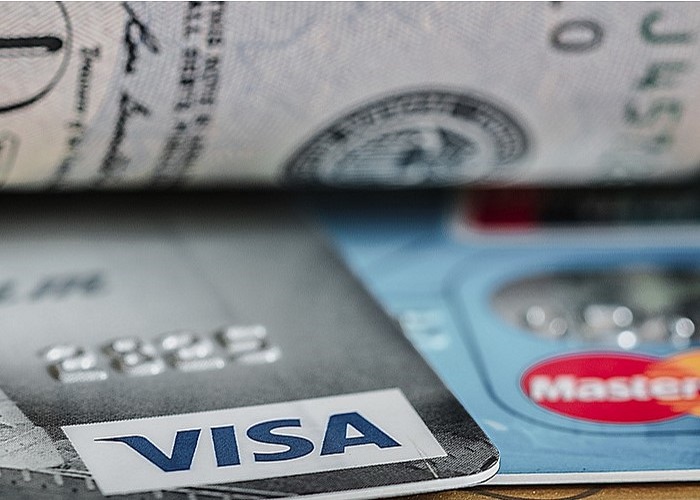Do you own a credit card?
Chances are you do.
Here is something you can do; go to your internet bank website or paper statements since, say, January 2020.
Can you see the interest rate you are charged per annum?
If your card is like mine, the rate will be north of 20% a year on purchases.
Has your credit card provider dropped that interest rate for you since January?
Or is it the same?
It is an interesting exercise to think about; the economy in lockdown can only really start to rebuild if consumers like you and me spend to support businesses.
And because of COVID, the use of cash is basically frowned upon.
So, the majority use their credit cards; and it’s easy to use them to order online too.
Have you wondered why the Government did not incentivize the banks to lower those rates?
This type of question leads us to the United States. There has been some significant momentum there to deal with outstanding debts, including credit cards.
But it is not about saving you, the consumer, money.
More about your behaviour.
How US Government actions have caused a major shift in the credit habits of US households.
To use the US consumers new-found spending power to drive the true engine of the US economy, housing.
And to witness, once again, how history is repeating.
Let us begin
A recent report published by Bloomberg in April caught our eye.
“Americans cut back on credit cards and other types of consumer borrowing in the second quarter as the pandemic froze the economy, sending overall household debt down for the first time in six years even as mortgage loans continued to rise.”
The Federal Reserve Bank of New York noted a fall in outstanding credit card balances, which fell to just above $14 trillion dollars in the first quarter; a $76 billion drop in total.
I am sure you will agree; these are simply amazing numbers involved here.
Even more interesting was the following comment:
“Meanwhile, mortgage borrowing rose by $63 billion in the quarter to $9.78 trillion. Almost 70% of mortgage originations were among borrowers with a credit score of at least 760, the highest percentage since records started in 2003.”
It appears a clear rotation away from credit cards (via paying off outstanding balances) and into mortgage borrowing.
Incidentally, paying off your credit card improves your credit score, a key requirement for being granted a mortgage loan.
The chart below shows the trend.

Source – Bloomberg.com
So, for the best credentialed borrower, there is significant benefits to refinance current mortgages or apply for new ones for home occupiers or investors.
Are these borrowers lucky, taking advantage of their high credit scores in an environment where lending by banks is made available only to a select few?
It is more nuanced than that.
This is how Governments can influence and drive lending behavior, by incentivizing the right type of lending that supports the biggest market of all, the land market.
Lenders in the US tightened standards last quarter on credit cards, auto loans and other kinds of household debt.
The main target of the Coronavirus Aid, Relief and Economic Security (CARE) payments that the US Congress approved in March included suspending student debt payments, auto loans and so on.
This meant borrowers were kept solvent and ensured that debts would not go bad while the economy was frozen. The CARE packages were generous enough for a lot of borrowers to pay down the principal and avoid interest charges.
So now add an environment where the lowest ever mortgage rates are now appearing on the market. Those borrowers able to maximize the breathing space granted by these CARE packages are now driving record US home building figures.
Exactly the behavior the Government wanted.
Now, back to history repeating.
The Property Sharemarket Economics (PSE) team study the 18.6-year Real Estate Cycle, 14 years up and 4 down with a mid-cycle recession interrupting the 14 years’ expansion.
We have shown our subscribers that we are right in the middle of the mid-cycle recession of the current real estate cycle. If you want to see how the cycle repeats through history get hold of my book “The Secret life of Real Estate and Banking”
Click HERE for details.
I have been waiting for the same repeatable and inevitable Government actions at this point in the cycle. As I show in my book, these are the same ones each US administration has used at the same time every cycle.
From page 312 of my book.
“…housing starts increase and hit a 16 year high the first quarter of 2003…..as interest rates fall, capital is freed up for home owners as they take advantage of the lower rates….an estimated $100 billion in spending power for consumers…”
Yep, 2003, during the mid-cycle recession last time around.
And the repeat?
From a Bloomberg article from August 22nd, 2020 (emphasis added).
“U.S. sales of previously owned homes surged by the most on record in July as lower mortgage rates continued to power a residential real estate market that’s proving a key source of strength for the economic recovery.”
“The housing market is past the recovery phase and is now in a booming stage,” Lawrence Yun, NAR’s chief economist, said on a call with reporters. “Certainly, record-low mortgage rates are bringing more buyers into the market.”
And this is how Governments influence behaviour to drive credit creation for the most important market of all, the land market.
Imagine what you can do with this information?
The PSE team are ready to guide you as this increased lending opens the next great opportunities for wealth creation.
Click HERE and make this advantage your own.
Best wishes
![]()
Phil Anderson
and your Property Sharemarket Economics team.


